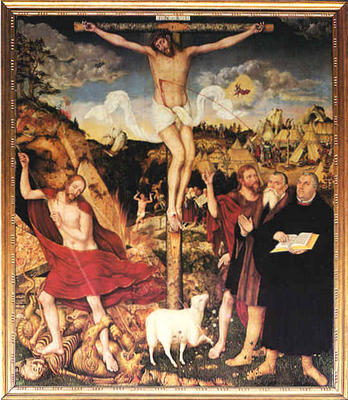Christ in Isaiah 53
Q: Every Christian I know points to Isaiah 52:13-53:12 as a prophetic passage about Jesus, so I’ve been studying it closely. If Isaiah 53 predicted that the Messiah would be“pierced for our transgressions,” why then, do Jesus’ apostles say things like, “Oh no, not you” in Matthew, for example, when Jesus says that He must be killed?
I’ve come up with three theories: 1) Isaiah was not understood by the Apostles, which could be implied when Isaiah says that some will be not hear and not understand, etc. They didn’t think Isaiah 53 was talking about a Messiah, rather Israel, the nation, or something else; 2) the “Oh, no!” was a human response which came from the wish to deny the prophecy because the thought of Jesus being tortured was too difficult for them. 3) Isaiah 53 does not refer to Jesus. Is there a “theory #4” or have I already come across the answer?

A: Actually, your theories #1 and #2 are closely related and both probably have some bearing on the apostles’ response. Part of the blame can be laid at the feet of later scholars, who mis-taught Israel. They only looked at the passages involving Messiah’s ultimate triumph and explained away the “Suffering Servant” of Isaiah 52 and 53, as well as the “Lamb to the Slaughter,” the destruction of the Tree and its fruit of Jeremiah 11:18-20, and other Messianic prophecies in terms of the prophet or the nation.
Remember also that the apostles were seeing great earthly success with the throngs following Jesus; they and may have thought that it was only a matter of time before he ran off the Romans. After three years with Jesus, Peter confessed Jesus as the Christ, then immediately spoke against the divine purpose of Messiah, as One dying for the sins of all people!
It’s not the fault of the Scriptures that they are misinterpreted; it’s the fault of the sinners doing the interpretation. Just as Christ praised Peter for the correct confession, He also said that His Father had revealed it to His disciple; this was not Peter’s great idea. So it is with us: Only the Holy Spirit can convince us of the truth of the Word of God and can lead us to proper interpretation and application. And as soon as Peter turned from the God-given confession of Jesus as Christ to the human-centered, “No, Lord, this cannot be,” Jesus rebuked him as Satan — just as we are also rebuked when we try to impose our wisdom upon God’s greater wisdom, which is so often foolishness to our sinful natures.
The ultimate problem is that we tend toward a “theology of glory,” looking for the ultimate victory and its rewards in this life. God instead hides behind the cross, not only sending his Son to his death but also crucifying our sinful desires and telling us through Jesus’ words to take up our own crosses and follow. If you would see the Father face-to-face in eternity, you will see him in this life only through the suffering and death of Jesus. This will never be the popular way, nor is it the way of human reason. But the way of the cross is the only way of salvation.
Scripture quoted from The Holy Bible, English Standard Version™, © 2001 by Crossway Bibles.
Send email to Ask the Pastor.
Walter Snyder is the pastor of Holy Cross Lutheran Church, Emma, Missouri and coauthor of the book What Do Lutherans Believe.

2 Comments:
Kung Fu Master Snyder,
I know I've seen that artwork before, MOF, I think I saw it this past Sunday at church. But who's the artist?
I've really learned to appreciate the softer things in life (music, art, etc.) from going a liberal arts college [Bethany College (E*CA) in Little Sweden, Lindsborg, Kansas,] because I can get so techical - math, aviation, avionics, NDT.
Thank you, Pr. Snyder.
Hello, Ron. The Resurrection corner of this central panel from a Renaissance alterpiece was on the cover of the Easter issue of the Lutheran Witness a few years ago (April 2001). Sources conflict a bit, but I think that might be because the father and son team of Lucas Cranachs did the work, with Lucas the Younger completing his father's painting after Lucas the Elder died. I'm not sure of the permanent display, but this photo shows it surrounded by other panels.
wps +
Post a Comment
<< Home